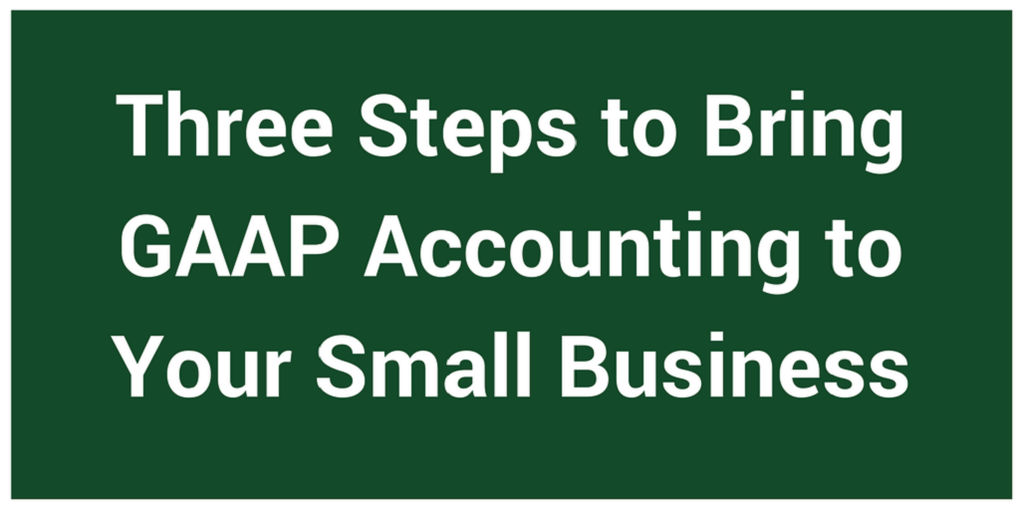Three Steps to Bring GAAP Accounting to Your Small Business

Rather than a clothing store, GAAP is an acronym that stands for Generally Accepted Accounting Principles. GAAP allows investors to more easily analyze financial statements without having to figure out each company’s unique accounting practices. Though not required, it is wise for a small business to practice GAAP accounting, as it will have you putting smart checks and balances in your small business, improve the ability to research vendor and customer issues, and have a better conversation with your business advisors.
To get started with GAAP, you will first need to get educated on GAAP principles and how they differ from your current accounting practices. It could involve minor changes or a major overhaul, and this is important to determine up front. You need to be clear about whether you do accounting on a cash to accrual basis, which depends on whether you are tracking expenses as they are incurred versus when they are paid, and revenue when it is earned, rather than paid to you. When you are ready to implement GAAP, here are three important steps:
-
- You will need to set up your bookkeeping methods. QuickBooks software is an excellent tool for small business accounting. The most important consideration here is that if you allow your bookkeeper to create and print the company checks, they should not be signing the checks.
- Reconcile your accounts to check your bookkeeper’s work. The unopened envelope containing the bank statement should go to a manager for opening, with them doing the reconciliation directly. Again, you do not want the same person that is printing all of the checks to do the reconciliation. This can be outsourced to an outside consultant, also, but they are working on the manager’s behalf, not the bookkeeper’s.
- Attach check stubs to bills, and archive them by year and by vendor. This will become critical during a future audit, and make any searches for old information much easier.
A good practice for a small business is to have an outside source, such as a certified public accountant (CPA) review your accounting file(s) annually. They can give you feedback on GAAP implementation that is practical, useful and feasible within your small business.
